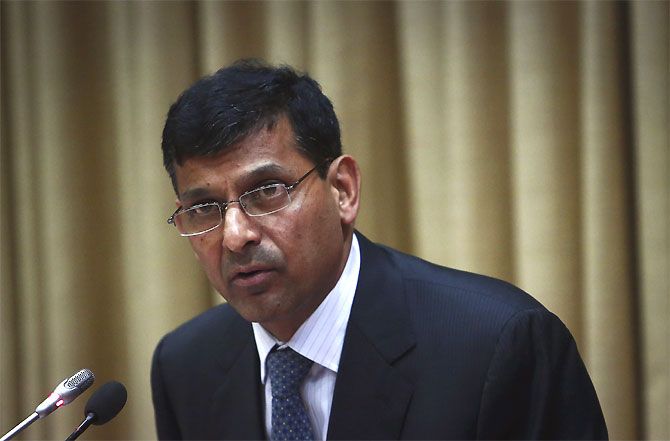 Food and oil prices under control, but RBI says no rate cut
Food and oil prices under control, but RBI says no rate cut
The Reserve Bank of India lived up to expectations by maintaining the status quo on the benchmark repo rate in its bi-monthly monetary policy statement on Tuesday.
In the process, it dashed hopes that a more benign inflationary environment would provide it with a rationale to reduce the rate.
Since the previous announcement in June, the monsoon has performed better than was forecast, with the first half of the four-month season showing aggregate rainfall just about three per cent below the long-period average.
As it stands, there does not seem to be a threat to production and prices.
In fact, the policy statement acknowledges this, referring to the increase in sown area for crops such as pulses.
Even so, however, the RBI says its survey of households suggests an upturn in inflationary expectation -- this is the justification for its stance.
Overall, expectations have re-entered the double-digit zone -- presumably at least partly driven by the recent upturn in food inflation but also, the statement emphasises, by the broad-based increase in the inflation rate for items other than food and fuel. Deeper understanding of the causes is obviously needed.
A second justification for the RBI’s decision is that transmission of the three rate cuts so far in this cycle, totalling 75 basis points, has resulted in only a 30 basis point reduction in the average bank lending rate.
The implication is that a rate cut would be wasted in a situation of weak transmission; better to wait until the process strengthens.
These rationales can of course be challenged.
Assuming that rainfall over the remaining two months is not terribly deficient --forecasts are mixed on this -- food prices do not pose a significant upside risk.
The recent downward trend in global crude oil prices improves the outlook further. The RBI’s forecast for consumer price inflation in January 2016 is now six per cent, 0.2 per cent lower than it was two months ago.
This is at the upper edge, surely, of what rainfall patterns and oil price developments would suggest.
The policy transmission issue is an old problem; unless specific steps are taken to strengthen it, the weakness may well persist.
For how long will it be a reason to postpone rate cuts?
At the very least, the RBI needs to explain why transmission is so weak and what steps it intends to take to improve the situation.
Part of the problem may well be the banks’ reluctance to lend in the face of onerous asset quality problems.
Fresh capital infusions are a part of the solution, which the statement acknowledges, but unlikely to be sufficient in and of themselves.
The worry is that, in exercising this caution, the RBI is perhaps losing an opportunity to provide a stimulus, however limited, to an economy in the early stages of recovery. Forecast errors can lead to making the wrong policy choices; and this inflation forecast may be at odds with the current state of play.
The RBI’s objectives would be better served by keeping tabs on the real overnight rate -- the difference between the repo rate and the current rate of inflation.
If, as has been indicated, this is ideally in the range of 1-1.5 per cent, there is legitimately some room for reducing the repo rate, which should be exploited sooner rather than later.
Image: RBI Governor Raghuram Rajan. Photograph: Reuters











